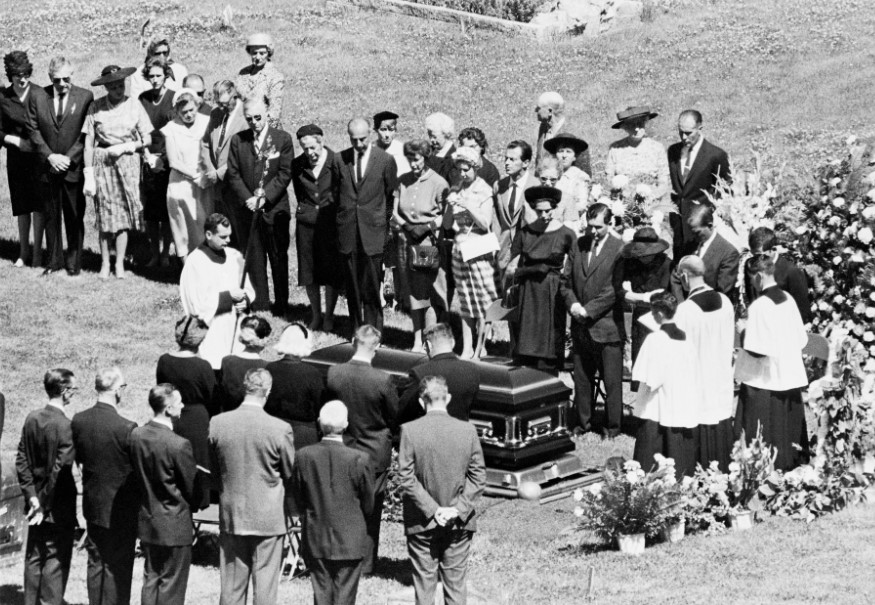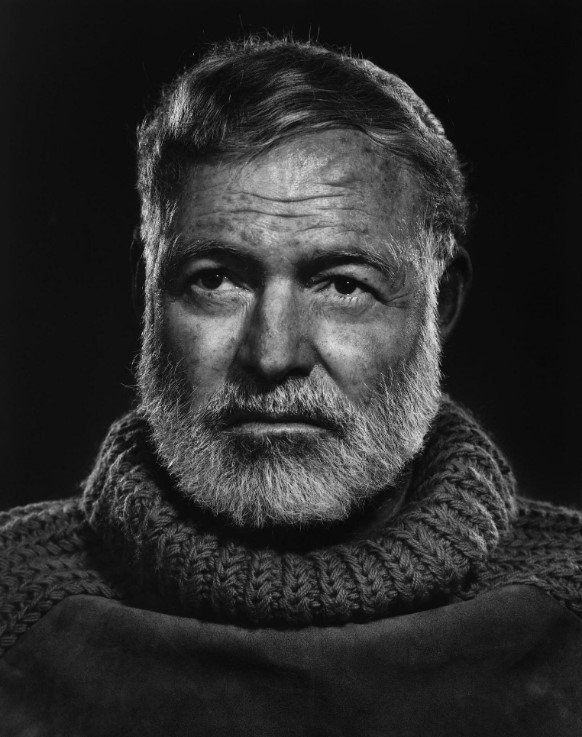August-November 2024
Library Foyer
The Community Library featured a Foyer exhibit that displayed objects collected from the gravesite of Ernest Hemingway, the Nobel and Pulitzer Prize-winning author. Hemingway died by his own hand in 1961 in his home in Ketchum, Idaho.* He was buried in the Ketchum Cemetery and his funeral ceremony was attended by close friends and family.

Curated by prominent Broadway director Les Waters, Hemingway’s Grave: A Year of Offerings, brought together select tokens from hundreds that were left at Ernest Hemingway’s grave in Ketchum over the course of one year. The exhibit featured all the liquors bottles left there, plus the coins and paper money, an assortment of ephemera, a rose, and a deeply personal letter.
Waters also selected items he found most interesting, and surprising, for the exhibit, including a brand-new red lipstick, a fly-fishing lure, a bullet casing, a shiny silver bracelet, and a cat collar. These are displayed in a collection with other ephemera found at the gravesite. One of the most poignant items left behind was a letter from a woman who found encouragement and hope in Hemingway’s work during in a particularly difficult period of her life.

Liquor bottles, coins, and paper bills were among the most common items left at Ernest Hemingway’s gravesite over the course of one year.
Ernest Hemingway’s Final Refuge

Ernest Hemingway died by suicide in Ketchum, Idaho, on July 2, 1961. He had been coming to Idaho for twenty-two years, when he was at the height of his literary powers and when he was his most vulnerable. He developed deep friendships here, and he had an abiding affection for the landscape.
Hemingway is buried in the Ketchum cemetery, now surrounded by the gravesites of his immediate family members and close friends. His gravesite has become a pilgrimage site, and many people leave offerings at his grave. The objects accumulate daily, throughout all the seasons.
In September 2022, the theater director Les Waters came to Ketchum through the Sun Valley Playwright’s Residency to collaborate with monologist David Cale on Blue Cowboy, a piece about Ketchum, a dog, a certain cowboy, and the annual Trailing of the Sheep.
Waters knew little about Ketchum before that visit—only that people skied here, that Gary Cooper and Marlene Dietrich were associated with the town; that perhaps a famous writer lived and died here. . . . While he was in Ketchum, Waters visited Hemingway’s gravesite, and he became fascinated by the tokens that people left there and what they might represent.
Waters was inspired to develop a project with The Community Library (with the permission of the Ketchum Cemetery) to collect and log these objects over the course of one year. He did so with the help of local literary scholar Lauren Allan, who also worked on the Hemingway Letters Project. Over one year, hundreds of objects were collected from the gravesite of this complex man who shaped modern literature.
The exhibit, Hemingway’s Grave: A Year of Offerings, presents a collection of these tokens. It will be on display in the Library’s Foyer through December 2024.
*The Historic Ernest Hemingway House and Preserve, which Ernest shared with his fourth wife, Mary Welsh Hemingway, is managed by The Community Library Association as a private residence for visiting writers, and the site of ongoing preservation efforts.

